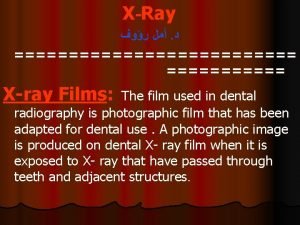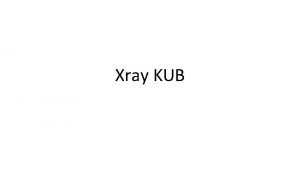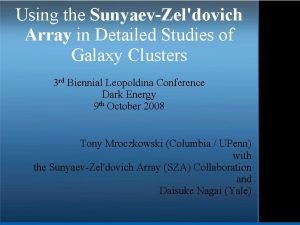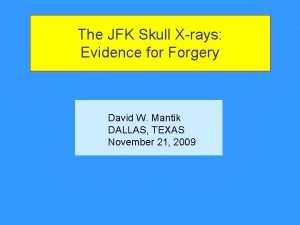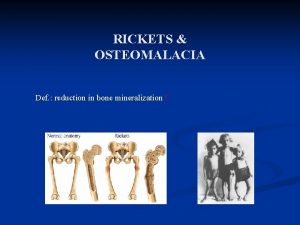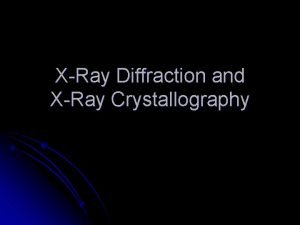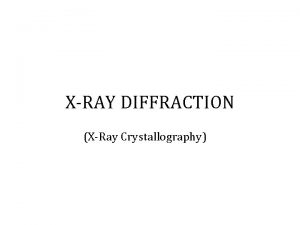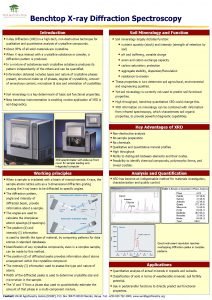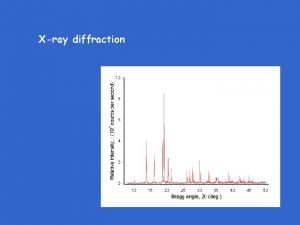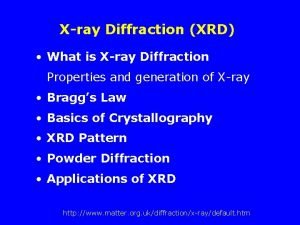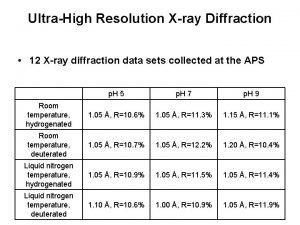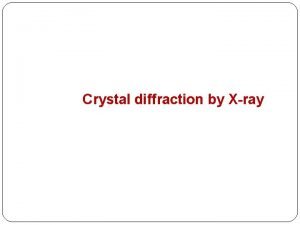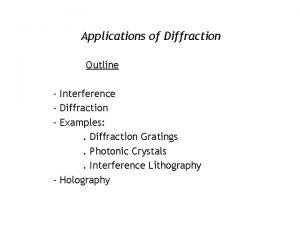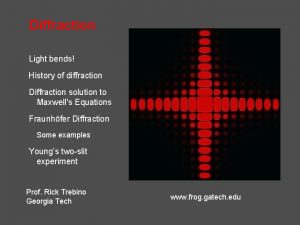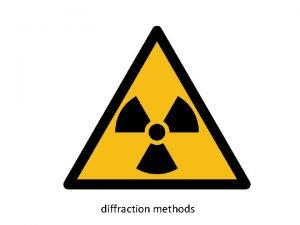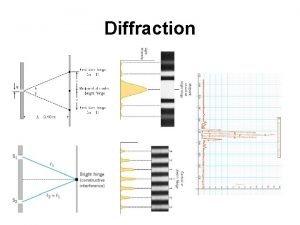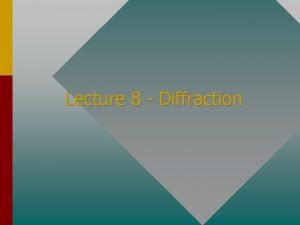Chapter 3 conclusion Silicacontaining materials Xray diffraction Applications















- Slides: 15

Chapter 3 (conclusion) • • Silica-containing materials X-ray diffraction Applications of single crystals Polycrystalline materials W. R. Wilcox, Clarkson University, last revised September 17, 2013

Silica • The most common elements on earth are Si & O • Si. O 2 (silica) has 14 polymorphic crystal structures, of which quartz is the stable phase at room T & P. – http: //en. wikipedia. org/wiki/Silicon_dioxide – http: //en. wikipedia. org/wiki/Quartz • Also exists as an amorphous phase, "quartz glass" or "fused silica. " • The strong Si-O bonds lead to high melting temperatures (>1600ºC) crystobalite (stable above 1470 o. C)

Silicates Bonding of adjacent Si. O 44 - tetrahedra accomplished by the sharing of corners, edges, or faces For example, quartz can be shown as: • Multivalent cations Ca 2+, Mg 2+, Al 3+ ionically bond Si. O 44 - to one another. • Examples: • Mg 2 Si. O 4 (Forsterite) with 1895 o. C melting point. • Ca 2 Mg. Si 2 O 7 (Åkermanite) with 1452 o. C melting point.

Layered Silicates • Layered silicates (e. g. , clays, mica, talc) – Si. O 4 tetrahedra connected to form a two-dimensional plane • A net negative charge is associated with each (Si 2 O 5)2 - unit • This negative charge is balanced by an adjacent plane rich in positively charged cations 4

Layered Silicates (continued) • Kaolinite clay alternates (Si 2 O 5)2 - layers with Al 2(OH)42+ layers Adjacent sheets of this type are loosely bound to one another by van der Waal’s forces, and so are easily separated.

Silica Glass Structure • • Glasses are not crystalline; they are amorphous. Silica glasses have short-range order, but not long-range order. Common silica glasses contain Na, Ca, Al, B oxides added to Si. O 2. The Si. O 4 remains the basic building block, but is portrayed in two dimensions as Si bonded to three O. • Fused silica has nothing added: Additives prevent some O from bonding to two Si. This lowers the melting point and the viscosity of the melt. Soda-lime glass is the most common, e. g. for windows.

Characterization by X-Ray diffraction • An important family of characterization methods. • They utilize x-ray diffraction for various applications, e. g. , identification of a material, obtaining crystal orientation, determination of a structure, viewing defects. See, for example: http: //en. wikipedia. org/wiki/X-ray_crystallography • All techniques use a beam of x-rays of a single wavelength λ to strike a sample and a detector for the x-rays coming from the sample. • First explanation was Bragg's Law in 1913 (http: //en. wikipedia. org/wiki/Bragg%27 s_law) • Consider that crystallographic planes reflect the x-rays:

Bragg's Law for X-Ray Diffraction • If diffracted beams from planes AA' and BB' are in phase, they reinforce one another. This occurs when the difference in the distances travelled by the two beams is a whole number n of wavelengths, nλ. The difference here is 2 dhklsinθ where h, k and l are the Miller indices of the planes.

Bragg's Law • nλ = 2 dhklsinθ • As with many "laws" explaining phenomena, this is a simplification of scattering by real atoms. • Nevertheless, it is an excellent first step in interpreting scattering of x-rays. • It is a necessary condition for diffraction, but not always sufficient. • For cubic structures only: • Note that for cubic structures the higher the indices for the planes, the smaller is dhkl, so the larger is θ. • One technique utilizes powder or a polycrystalline solid as the sample, so that very many orientations are exposed to the beam. • The motion of the beam and detector are synchronized:

X-Ray Powder Pattern z z Intensity (relative) c a x c z b c y (110) a x b a y x (211) b y (200) Diffraction angle 2 q Diffraction pattern for polycrystalline -iron (BCC) 10

Laue Methods for Single Crystals • Utilize photographic film. • Gives spots, each one of which is for a particular crystallographic plane. • Symmetry of spots reveals the symmetry of the plane normal to the beam.

Laue pattern for Mg (0001) Six-fold symmetry: As you go around, the same pattern repeats 6 times. VMSE

http: //minerva. union. edu/jonesc/scientifi c_photos%202010. htm

Crystals as Building Blocks • Many modern applications use synthetic single crystals, e. g. integrated circuits (computer chips), solar cells, infrared detectors, x-ray detectors, oscillators, solid-state lasers, light emitting diodes, magneto-optic memory devices, micro electromechanical systems, lenses, hard windows, etc. • Jet engine turbine blades • Many properties of crystals depend on crystallographic direction, i. e. they are asymmetric. • Most engineering materials are polycrystalline, i. e. they consist of many separate crystals called "grains. " • The grains may be randomly oriented or partially aligned, depending on how the material was produced. • Grain sizes range from nm to cm. Some properties depend on grain size. • For small randomly-oriented grains, the macroscopic properties are isotropic.

Polycrystalline Example 1 mm • Electron-beam welded Nb-Hf-W plate. • The small equiaxed grains on the two sides are the original unaffected material. • The elongated grains in the middle result from being melted and refrozen by the electron beam (moved downward here). • The equiaxed grains near the elongated grains have grown larger because of being heated without melting (heat-affected zone). 15
 Classification of insulating materials
Classification of insulating materials Which insulating material is used in circuit breakers
Which insulating material is used in circuit breakers Favourite cars
Favourite cars Useful material found at home
Useful material found at home Man made map
Man made map What is adopting materials
What is adopting materials Direct materials budget with multiple materials
Direct materials budget with multiple materials Acute retropharyngeal abscess
Acute retropharyngeal abscess The label side of the dental film packet
The label side of the dental film packet Plain film kub
Plain film kub Xray xml editor
Xray xml editor Sza xray
Sza xray Jfk skull
Jfk skull Mary beth sanders
Mary beth sanders Rickets def
Rickets def Pulmonary embolism x ray
Pulmonary embolism x ray








